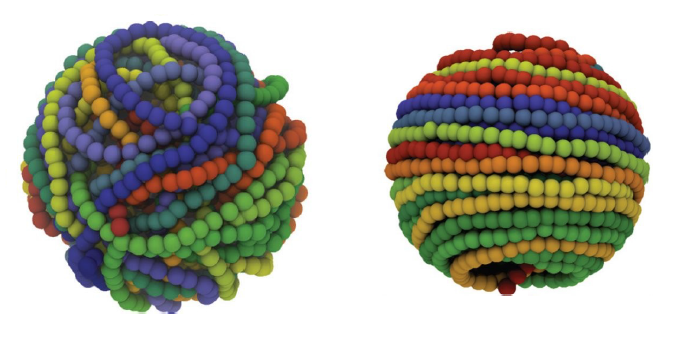Science Festival Interview with Professor Davide Marenduzzo
Professor Davide Marenduzzo of the University's School of Physics and Astronomy and Professor De Witt Sumners of Tallahassee University will journey through the story of knots in The Knotted Strands of Life.

This discussion takes place at the Summerhall Anatomy Lecture Theatre at 5.30pm on Tuesday 5 April.
What can people coming along to your event expect to experience?
They will take part in fun, interactive demonstrations of the applications of knot theory in DNA and biomolecules, made with coloured paper ribbons, glue and scissors. They will also relive the history of knot theory, which began in Edinburgh almost two centuries ago, and learn how the theory of knots and links is important for biology and medicine.
What do you hope participants get out of coming along?
I hope they will learn how far-reaching the consequences of the mathematical theory of knots are in the real world, from understanding the structure of DNA to the basis of commonly used anti-cancer drugs.
Why is taking part in the science festival important to you?
De Witt and I strongly believe in the importance of outreach and of speaking about science to the general public. The Science Festival is a great place to do this, which is why it is particularly important to both of us.
Why is it important that the University plays a role in the science festival?
There are a lot of people of all ages who are interested in science: some have chosen another path in life but are educated scientifically and want to know what is going on in the world of research; many young people will be deciding whether to pursue a career as a scientist and want to understand what it is like to do science; and others are just curious! The University should respond to this interest, and I believe it is an important part of our job as scientists to do so.
Do you find it challenging to engage with the public?
The challenge is to be able to explain complicated concepts, which may be of interest to an audience that often includes young people, in a simple way. In my experience, this is almost always possible, but it can be challenging, since it is not what we normally do in our day-to-day jobs.
What impact does your work have on society?
The part of my work directly connected with this event deals with the 3D structure of chromosomes, which we are collaborating on with the Western General Hospital and other biomedical institutes in the UK. In the long term, we hope to be able to accurately predict the structure of chromosomes in a stem cell, liver cell or brain cell, or in a cell with a disease such as cancer or a genetic disorder. This is important because the 3D structure of chromosomes is crucial in determining which genes are active or inactive in a cell, and may also suggest ways in which cells can be turned from one type into another.
How does your public engagement work affect how you carry out your job?
Over the past few years, I have given talks at schools and have occasionally written popular physics articles. I have found that my engagement work has made me rethink the organisation of some of the lectures I give to undergraduates. For instance, I now like to use visual demonstrations in many of my lectures, and in some cases these have been adapted from ones originally used in my public talks.
The Knotted Strands of Life on the Science Festival Website

